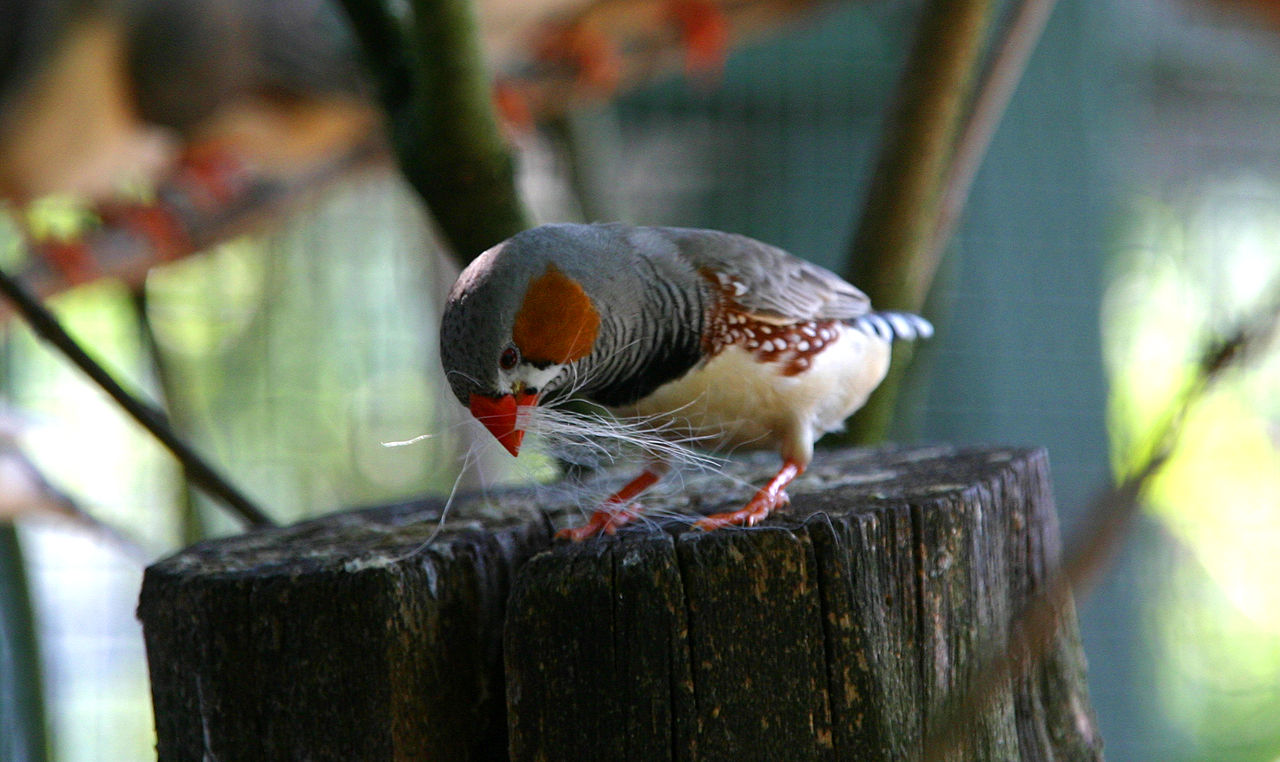- Billions of birds collide with man-made structures and aircraft every year, which devastates bird populations and harms companies that must pay the cost of damages.
- John Swaddle, professor of biology at the College of William & Mary, and his team have developed two technologies to help reduce the risk of collision, the Sonic Net and the Acoustic Lighthouse.
- The team applied an understanding of birds’ communication and migration behaviors to develop strategies that successfully reduce collision risk.
Years of studying birds and their relationship with their environment taught John Swaddle, professor of biology at the College of William & Mary, the importance of understanding animals’ instincts and behaviors when developing methods for improving human-wildlife interactions.
Swaddle used what he knew about different bird species’ tendencies to create a pair of systems that minimize collisions with tall man-made structures, such as skyscrapers or wind turbines, and keep birds away from areas where their presence may be unwelcome or a hazard, such as on farmland or airports. He presented his findings in February at the American Association for the Advancement of Science in Austin, Texas.
In his presentation, Swaddle introduced two different technologies, the Sonic Net and the Acoustic Lighthouse.

Testing Sonic Nets to remove birds from risky areas
When working on the Sonic Net, Swaddle kept the long-standing practice of scarecrows on farmland in mind. He recognized that scarecrows only temporarily discourage birds from visiting an area because birds learn that they are not a real threat.
“Birds are pretty smart, they habituate, and if the threat is not real they know and they stick around,” Swaddle said. “Those kinds of technologies just show diminishing returns, no matter how high-tech the technology gets. Birds will still habituate if you don’t take into account fundamental aspects of their behavior.”

Instead, Swaddle looked for long-term solutions. He considered noise pollution and how a higher concentration of noise in an area affects birds. Birds are attracted to quieter areas, where they have a better perception of the predatory risks. Introducing noise prompts birds to perceive greater risk, and they begin to avoid the area.
Rather than introducing extraneous noise to a wide area to keep the birds away – which would then affect humans and other wildlife within the area – Swaddle and his team used parametric array speakers, which direct the artificial “pink” noise to a specific space. The speakers enabled Swaddle to direct sound to areas they wanted birds to avoid. They were also able to control the noise’s frequency, so that the sound interfered with the birds’ communication.

They tested this approach using captive European starlings. When the Sonic Net was set at a frequency that simulated the frequency the birds use to communicate, the starlings’ vigilance immediately increased. By hindering their ability to communicate, the loud noise prevented them from being able to hear and respond to alarm calls, forcing them to remain more vigilant and forage less efficiently.
In fact, when the team tried to scare the birds, they didn’t perceive the risk and react to the threat. Despite the birds’ increased vigilance, the artificial sound overwhelmed their senses. The methods were also tested in the wild, at an active airfield site in Virginia, where noise discouraged birds from occupying the area.

“In an area where a lot of this introduced noise is specifically designed to prevent them from hearing each other, that’s equivalent to (humans) walking down the dark alleyway,” Swaddle said. “If we give them the choice of a place with less noise, they’ll choose to go there.”
Their study, which was published in Ecological Applications, also found that the birds did not habituate to the Sonic Net method after four weeks, which is an encouraging sign that this could become a long-term solution.

An Acoustic Lighthouse to reduce birds’ collisions with man-made structures
Swaddle’s conference presentation also introduced the Acoustic Lighthouse method for minimizing birds’ collisions with large human-made structures. In a study published in Integrative and Comparative Biology, Swaddle and his team set out to discover why birds fly into objects that are seemingly obvious to humans and how directed sound could help the birds notice a structure before a collision.
Swaddle explained that when birds are flying, especially during migration, they aren’t looking straight ahead to see where they’re going – rather, their head is angled down with their back flat. The birds’ eyes are also positioned around the side of the skull, instead of in front.
“When birds are flying, their angle of view, direction of gaze, is really to the side and down,” Swaddle said. “Some birds, some of the eagles, actually have a blind spot in front of them, so they can’t see, and their attention is not where it should be.”
The solution, which the team named an Acoustic Lighthouse, projects conspicuous warning sounds in front of a structure. As the bird approaches the building or wind turbine, the sound diverts the direction of the bird’s attention early enough to avoid a collision.
The Acoustic Lighthouse study has not yet been tested in the wild, but Swaddle said results from his captive study look promising. When testing it with 18 domestic zebra finches, his team found that an audible sound field caused the birds to slow down in flight and alter their body and tail position in about 20 percent of cases. These birds would collide with the structure at a much lower velocity or avoid it all together.

Swaddle said that successful development of technologies such as Sonic Net and Acoustic Lighthouse require basic understanding of bird and other wildlife behaviors and responses.
“Without a fundamental understanding of what animals are actually doing, how they’re sensing the world and how they’re behaving, you can’t even develop these kinds of ideas,” Swaddle said.
FEEDBACK: Use this form to send a message to the editor of this post. If you want to post a public comment, you can do that at the bottom of the page.
